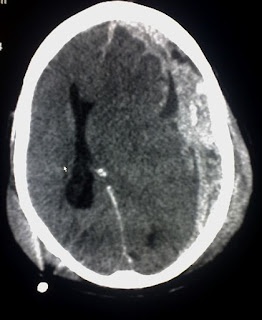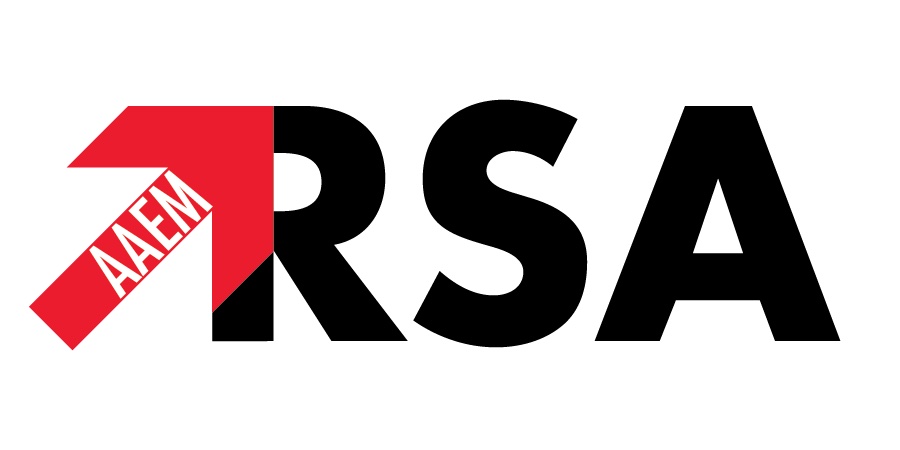 |
| This post was peer reviewed. Click to learn more. |
 |
| Image Credit: Wikimedia |
Author: Tim Montrief, MD MPH
Jackson Memorial Health System/University of Miami
AAEM/RSA Publications and Social Media Committee Member
The catastrophic neurologic emergency remains one of the most challenging presentations managed by emergency physicians. Stress, diagnostic uncertainty, and time-sensitive nature lead to challenging management decisions. Likewise, the intubation of the neurocritical care patient provides many challenges, and requires a modified technique to avoid the harmful consequences of intubation, including an exaggerated reflex sympathetic response to laryngoscopy, hypotension due to induction agents, and exacerbation of elevated intracranial pressure (ICP). Additionally, maximizing first past success and minimizing hypoxia is especially important in patients with central nervous system (CNS) pathology, in particular, unsecured aneurysmal subarachnoid hemorrhage (SAH), traumatic brain injury (TBI), and stroke. Optimization of the neurocritical care patient is of upmost importance, and many of the techniques are familiar to the emergency physician. For instance, apneic oxygenation via a nasal cannula on the patient at 15 L/min maximizes oxygenation prior to intubation. Additionally, one may raise the head of the bed, which decreases ICP and has a beneficial effect on oxygenation. While ninety degrees is the ideal angle, elevation of the head of bed to thirty degrees is also an option. Finally, if faced with an agitated, combative patient, delayed sequence intubation (read more about it here) may be an option to optimize preoxygenation.
Furthermore, hypertension should be controlled using a rapid acting, titratable antihypertensive agent, typically labetalol (20-80 mg intravenous (IV) bolus every 10 minutes) or esmolol (loading dose 500 μg/kg over 1 minute, infusion 25-50 μg/kg/min titrated every 10-20 min). However, remember to provide analgesia first, as pain may be the underlying cause of hypertension. Consider treatment for intracranial hypertension, especially in the case of a patient presenting with TBI. This would include osmotherapy (e.g. mannitol or hypertonic saline bolus), adequate analgesia, and maintaining the patient’s head in neutral position, avoiding neck constriction. It is optimal to remove the c-spine collar and use midline in-line stabilization during intubation if possible.
Finally, reflex sympathetic response to intubation should be prevented with pharmacological and non-pharmacological means. In order to ensure first pass success and prevent repeated stimulation by laryngoscopy, you should use the most experienced intubator, elevate the head of bed to thirty degrees, and reduce the force required to achieve glottic exposure by utilizing video laryngoscopy. Many medications have been thought to mitigate the rise in ICP during laryngoscopy, including lidocaine, fentanyl, dexmedetomidine, alfentanil, remifentanil, and esmolol.[1-3] However, the use of lidocaine to prevent the sympathomimetic response has been debunked in recent studies, and such, has fallen out of favor.[4,5] Multiple randomized controlled trials of fentanyl, alfentanil, or remifentanil versus lidocaine or placebo have shown attenuation of the hemodynamic response to laryngoscopy, but these doses are higher than those typically given for analgesia: 4-5 mcg/kg of fentanyl, 1-3 mcg/kg of ramifentanil.[6] Fentanyl offers many advantages, as it is a cardiostable sympatholytic agent. However, it has been associated with respiratory depression in large doses, and there are reports of patients experiencing chest rigidity due to fentanyl. Likewise, esmolol 1.5-2 mg/kg IV given three minutes before intubation could be used as a sympatholytic agent, although it is not widely utilized for this purpose.[7] Less-studied options include nicardipine 20 mcg/kg IV [8] and topical lignocaine (5 ml of 4% lidocaine spray) which have been shown to effectively attenuate the cardiovascular responses to intubation.[9]
Intubating neurocritical care patients produces several challenges, necessitating a modified technique to avoid the harmful consequences of intubation. The strategies for ensuring optimal conditions by ensuring adequate preoxygenation, controlling hypertension and intracranial pressure, and preventing the reflex sympathetic response to laryngoscopy are summarized in Table 1.
 |
| Table 1. Strategies for pre-intubation optimization of the neurocritical care patient |
References:
1. Gulabani M, Gurha P, Dass P, Kulshreshtha N. Comparative analysis of efficacy of lignocaine 1.5 mg/kg and two different doses of dexmedetomidine (0.5 μg/kg and 1 μg/kg) in attenuating the hemodynamic pressure response to laryngoscopy and intubation. Anesth Essays Res. 2015;9(1):5-14.
2. Meftahuzzaman SM, Islam MM, Ireen ST, et al. Comparison of efficacy of labetalol and fentanyl for attenuating reflex responses to laryngoscopy and intubation. Mymensingh Med J. 2014;23(2):242-8.
3. El-shmaa NS, El-baradey GF. The efficacy of labetalol vs dexmedetomidine for attenuation of hemodynamic stress response to laryngoscopy and endotracheal intubation. J Clin Anesth. 2016;31:267-73.
4. Lin CC, Yu JH, Lin CC, Li WC, Weng YM, Chen SY. Postintubation hemodynamic effects of intravenous lidocaine in severe traumatic brain injury. Am J Emerg Med. 2012;30(9):1782-7.
5. Robinson N, Clancy M. In patients with head injury undergoing rapid sequence intubation, does pretreatment with intravenous lignocaine/lidocaine lead to an improved neurological outcome? A review of the literature. Emerg Med J. 2001;18(6):453-7.
6. Hosalli V, Es A, Hulkund SY, Joshi C. “Comparative efficacy of different doses of fentanyl on cardiovascular responses to laryngoscopy and tracheal intubation”. J Clin Diagn Res. 2014;8(9):GC01-3.
7. Sharma S, Suthar OP, Tak ML, Thanvi A, Paliwal N, Karnawat R. Comparison of Esmolol and Dexmedetomidine for Suppression of Hemodynamic Response to Laryngoscopy and Endotracheal Intubation in Adult Patients Undergoing Elective General Surgery: A Prospective, Randomized Controlled Double-blinded Study. Anesth Essays Res. 2018;12(1):262-266.
8. Atlee JL, Dhamee MS, Olund TL, George V. The use of esmolol, nicardipine, or their combination to blunt hemodynamic changes after laryngoscopy and tracheal intubation. Anesth Analg. 2000;90(2):280-5.
9. Kocamanoglu IS, Cengel kurnaz S, Tur A. Effects of lignocaine on pressor response to laryngoscopy and endotracheal intubation during general anaesthesia in rigid suspension laryngoscopy. J Laryngol Otol. 2015;129(1):79-85.
